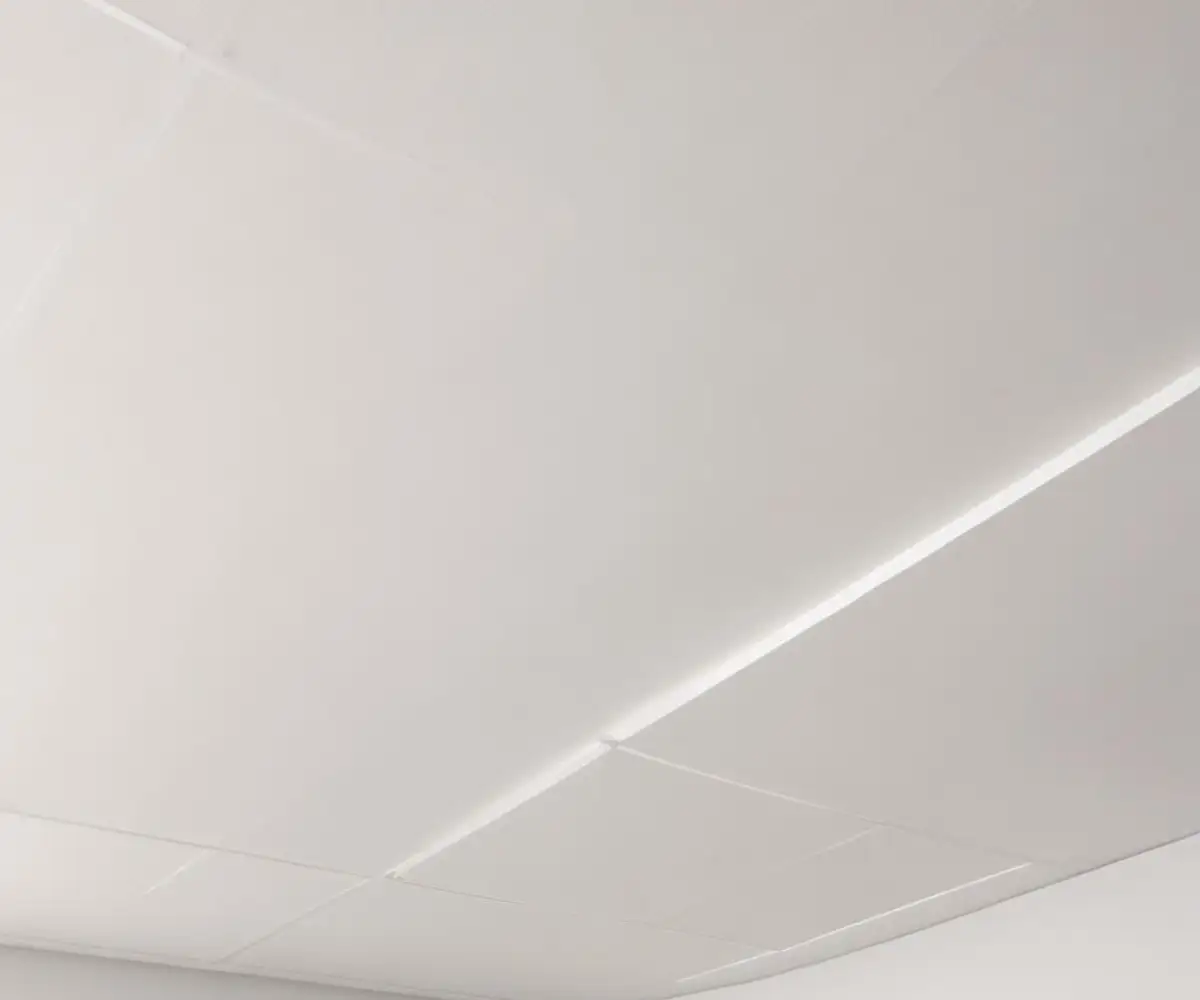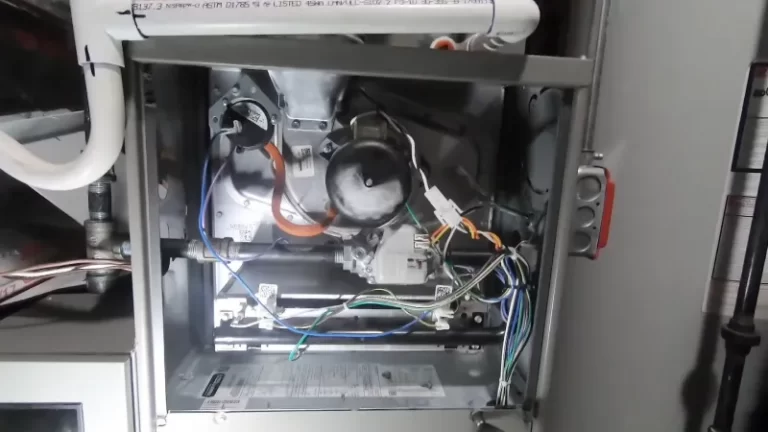Buzzing Noise in Your Ceiling? 7 Causes & How to Fix It FAST
That persistent, nagging buzz coming from your ceiling isn’t just annoying; it’s a sound that demands your attention. While it’s easy to try and ignore it, a buzzing noise can be a critical warning sign of everything from a dangerous electrical fault to an unwelcome pest infestation hiding just out of sight.
Ignoring the sound won’t make it go away, and in some cases, could lead to more significant problems. This guide will help you decipher the buzz, identify the source, and take the correct steps to restore peace and safety to your home.
You'll Learn About
Why You Should Never Ignore a Buzzing Sound in the Ceiling
A buzzing sound is more than a simple nuisance. It often indicates that something is vibrating at a high frequency, which could be mechanical, electrical, or even biological. The primary concern is always electrical, as a buzz can signal loose wiring, an overloaded circuit, or a failing component—all of which are potential fire hazards.
Beyond the immediate safety risks, these noises can point to issues that will worsen over time. A vibrating pipe could eventually lead to a leak, and a growing pest colony can cause significant structural damage. Taking prompt action is key to preventing a small annoyance from becoming a major repair bill.

Step 1: Pinpointing the Source of the Buzz
Before you can solve the problem, you need to play detective. The characteristics of the sound can provide crucial clues about its origin. Start by listening carefully and asking yourself a few key questions to narrow down the possibilities.
Is the sound constant or intermittent? Does it only happen when a light is turned on, or when water is running? Is it loudest near a specific light fixture, air vent, or corner of the room? Try turning off the circuit breakers to the room one by one to see if the noise stops; this can quickly confirm if the source is electrical.
Common Culprits: Unmasking the Cause of the Ceiling Buzz
Most ceiling buzzing noises can be traced back to one of a handful of common sources. Understanding these potential culprits is the first step toward finding a solution. From your home’s wiring to unwelcome critters, here are the most likely reasons for that mysterious noise.
1. Electrical Issues: The Silent Danger
This is the most serious potential cause and should be your first consideration. An electrical buzz often points to a problem that requires immediate attention. A continuous, steady hum or buzz from wiring, outlets, or switches is a clear warning sign.
Common electrical causes include loose wiring connections, a failing circuit breaker, or an overloaded circuit. Another frequent offender is an incompatible dimmer switch used with LED or fluorescent bulbs, which can cause the bulb’s internal components to vibrate and buzz. If you suspect an electrical issue, it is crucial to contact a licensed electrician immediately.
2. Uninvited Guests: When Pests Are the Problem
A sound that is more of a “live” buzzing or scratching, especially if it’s intermittent and seems to move, could be a sign of pests. Bees, wasps, and hornets can build nests in the void between your ceiling and the floor above, and the collective hum of the colony can be surprisingly loud.
You may hear increased activity at certain times of the day as the insects enter and exit the nest. Look for any unexplained stains on the ceiling, as these could be a sign of a nest. If you suspect pests, do not attempt to block their entry point from the outside, as this can force them further into your home. It’s safest to call a professional pest control service.
3. Lighting Fixtures and Ceiling Fans
The fixtures themselves are often the source of buzzing. With fluorescent lights, an aging or failing ballast is a classic cause of a loud, persistent hum. For LED and incandescent bulbs, buzzing is commonly linked to dimmer switches that aren’t fully compatible with the bulb type.
Ceiling fans can also produce buzzing sounds. This might be due to an overworked motor, unbalanced blades causing vibration, or loose components within the light fixture attached to the fan. Try turning the fixture off and on to see if the noise is directly related.
4. HVAC Systems: Your Air Ducts Might Be Humming
If the buzzing noise is most noticeable when your heating or air conditioning is running, the source is likely your HVAC system. The sound could be caused by vibrations in the ductwork, which may have come loose from its supports in the ceiling.
It could also be a foreign object or debris caught in a vent, causing the air to vibrate as it passes through. Sometimes, the main air handler unit, if located in the attic, can create vibrations that travel through the ceiling joists. Check your vents for any obvious blockages or loose fittings.
5. Plumbing Predicaments: Vibrating Water Pipes
Though often described as a humming or banging sound, vibrating water pipes can sometimes produce a buzzing noise. This can happen when water is flowing or, more commonly, right after a valve is shut off quickly—an effect known as “water hammer.”
Pipes that are not securely fastened can vibrate against ceiling joists or drywall. If the noise occurs when you use faucets, flush toilets, or when an appliance like a dishwasher runs, there’s a good chance it’s related to your plumbing.
Troubleshooting Your Ceiling Noise: A Quick Guide
Use this table to quickly diagnose the potential source of the buzzing sound based on its specific characteristics. This can help you decide on the most appropriate next step, whether it’s a simple DIY fix or a call to a professional.
| Symptom | Most Likely Cause | Recommended Action |
|---|---|---|
| Buzzing stops when the circuit breaker is off. | Electrical Issue (loose wire, bad breaker, faulty switch) | Call a licensed electrician immediately. Do not attempt to fix it yourself. |
| Buzzing only happens when a specific light is on. | Incompatible bulb/dimmer, failing ballast, or loose fixture. | Try a different bulb (ensure it’s dimmer-compatible). Tighten the fixture. Replace the ballast if fluorescent. |
| Sound is scratchy, “live,” and can be heard from different spots. | Pest Infestation (bees, wasps, rodents) | Contact a professional pest control service for safe removal. |
| Buzzing occurs only when the HVAC system is running. | Loose ductwork, debris in a vent, or air handler vibration. | Inspect vents for blockages. Call an HVAC technician for ductwork inspection. |
| Noise happens when water is turned on or off. | Plumbing Vibration (water hammer, loose pipes) | Secure any visible loose pipes. If the problem persists, call a plumber. |
| Constant humming from a ceiling fan. | Unbalanced blades, failing motor, or loose parts. | Turn off and clean the fan. Tighten all visible screws. Use a blade balancing kit. |
Beyond the Obvious: Less Common Causes of Ceiling Buzzing
Sometimes, the source of a buzz is more subtle and harder to trace. Modern homes are filled with electronics that can introduce “dirty” electricity or harmonic distortion into your wiring. This can cause vibrations in wiring or fixtures that are otherwise perfectly sound.
Another factor is structural resonance. A very faint vibration from an external source—like nearby traffic or construction—can be amplified by the specific dimensions and materials of your ceiling, turning an unnoticeable vibration into an audible buzz. These causes are rare but can explain noises that defy conventional troubleshooting.
When to Call a Professional (And Who to Call)
While some issues can be addressed by a handy homeowner, many require professional expertise. Knowing who to call is critical for a safe and effective solution. Don’t hesitate to seek professional help, especially when safety is a concern.
For any sound you suspect is electrical, stop and call a licensed electrician. If you hear scratching or the buzzing sounds like live insects, a pest control expert is your best bet. For noises related to water flow, a plumber can diagnose and fix issues like water hammer or loose pipes. Finally, if the sound is clearly linked to your heating or cooling system, an HVAC technician is the right professional for the job.
Preventative Measures: Keeping Your Ceiling Silent
The best way to deal with a buzzing ceiling is to prevent it from happening in the first place. Schedule periodic electrical inspections to catch loose connections before they become a problem. Ensure your home is sealed against pests by checking for cracks in the foundation and gaps around pipes and vents.
Regular maintenance of your HVAC system can prevent most vibration-related noises. When installing new light fixtures or ceiling fans, ensure all components are securely tightened and that you use bulbs that are fully compatible with your switches, especially when using dimmers.
A Special Note on Other Noises
It’s important to distinguish a buzz from other sounds. For instance, a persistent faint sound might be better described as a high-pitched noise coming from the ceiling, which often points to different issues like failing electronics or even tinnitus. This is particularly crucial in multi-unit dwellings, where a high-pitched noise in an apartment could be coming from a neighbor. Similarly, a more intense vibration might be caused by an appliance like an attic fan, which can cause significant attic fan vibration if not properly maintained.
Conclusion: Regain Your Peace and Quiet
A buzzing noise in the ceiling is a problem that should never be dismissed. By methodically identifying the sound’s characteristics, you can narrow down the potential causes and determine the right course of action. Whether it’s a simple bulb swap or a necessary call to an electrician, addressing the issue promptly will not only restore tranquility to your home but also ensure its safety.
Don’t let a mysterious buzz disrupt your peace of mind. Take control of the situation by using this guide to diagnose the problem and implement the correct solution, ensuring your home remains a quiet and safe sanctuary.



